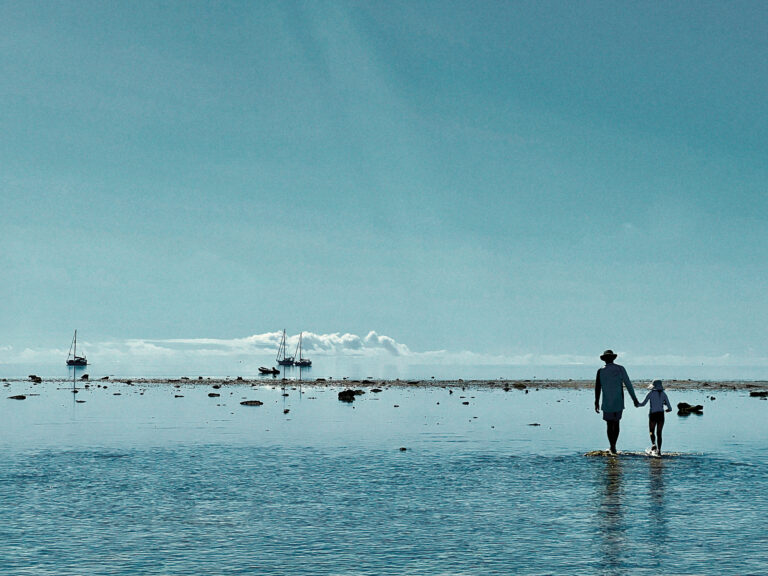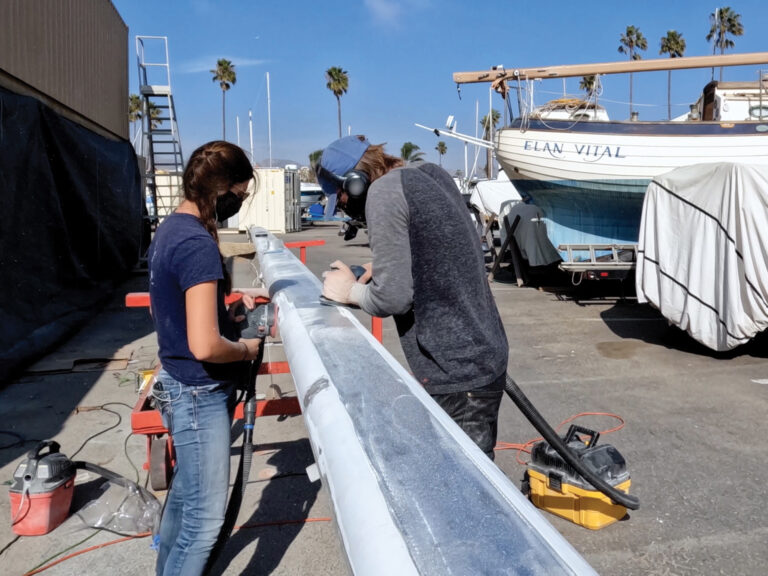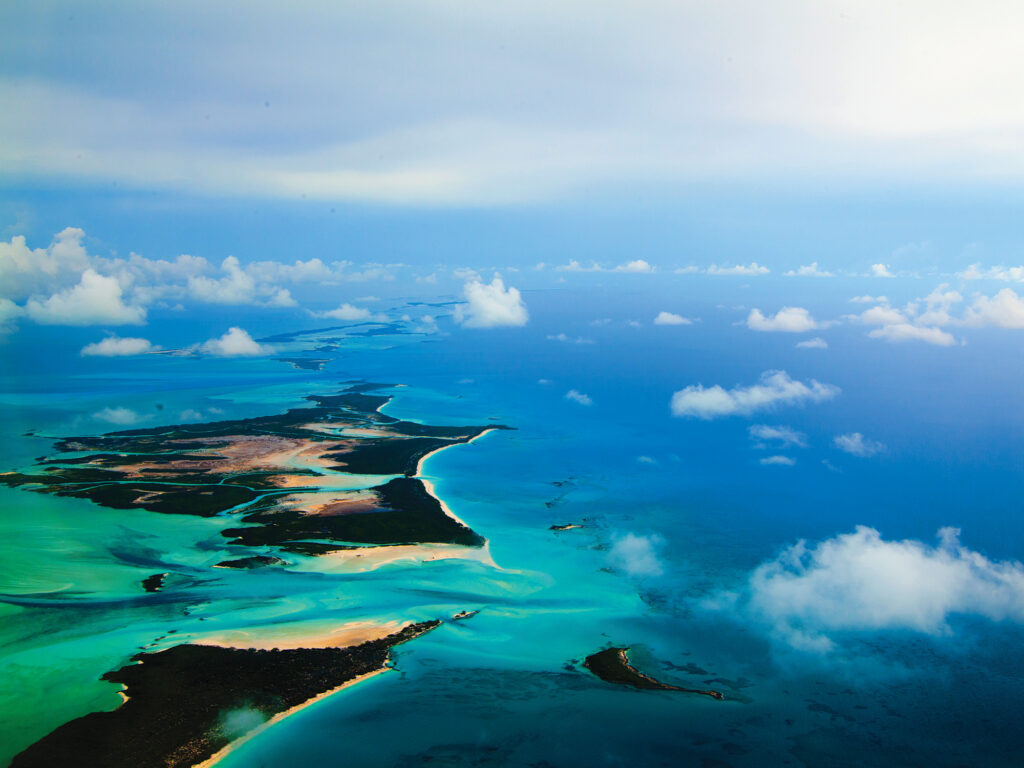
In my mind, a two-line power-pop lyric from the Hold Steady’s 2006 album Boys and Girls in America —“It started recreational, ended kind of medical”—played and replayed in an unbroken loop through several of the eight days that I lay confined in a bed at Doctors Hospital, Nassau, Bahamas.
I should say right up front that I have a preexisting condition. In June 2019, I was diagnosed with bladder cancer. After chemotherapy, then surgery, then more chemotherapy, my team of doctors at Massachusetts General Hospital ticked the box that said “cured.” As part of the operation, my surgeon removed 47 lymph nodes from the lower right side of my torso. When the results came in, we cheered for the complete absence of any indication that the malignancy had migrated.
Yet the removal of those lymph nodes left a vulnerability in my otherwise robust immune system that would come back to haunt me—and haunt my partner, Lesley Davison, too.
But that would all come later.
Lesley and I bought Billy Pilgrim, our 1988 Passport 40, in fall 2017, with a plan to sail the boat north from Florida in the spring and summer, complete a refit at Maine Yacht Center in Portland, and then go voyaging, possibly even trans-Atlantic. During winter 2019, we got a good jump on the refit project (see “Billy Pilgrim’s Progress,” CW, November/December 2020), but my cancer diagnosis, and then the world’s COVID-19 diagnosis, set us back two seasons. In September 2021, we finally set off (see “Ready or Not, Sailing Billy Pilgrim South,” CW, September), and only in early February 2022, after we crossed the Gulf Stream to the Bahamas, did we finally ease into our own good cruising groove.
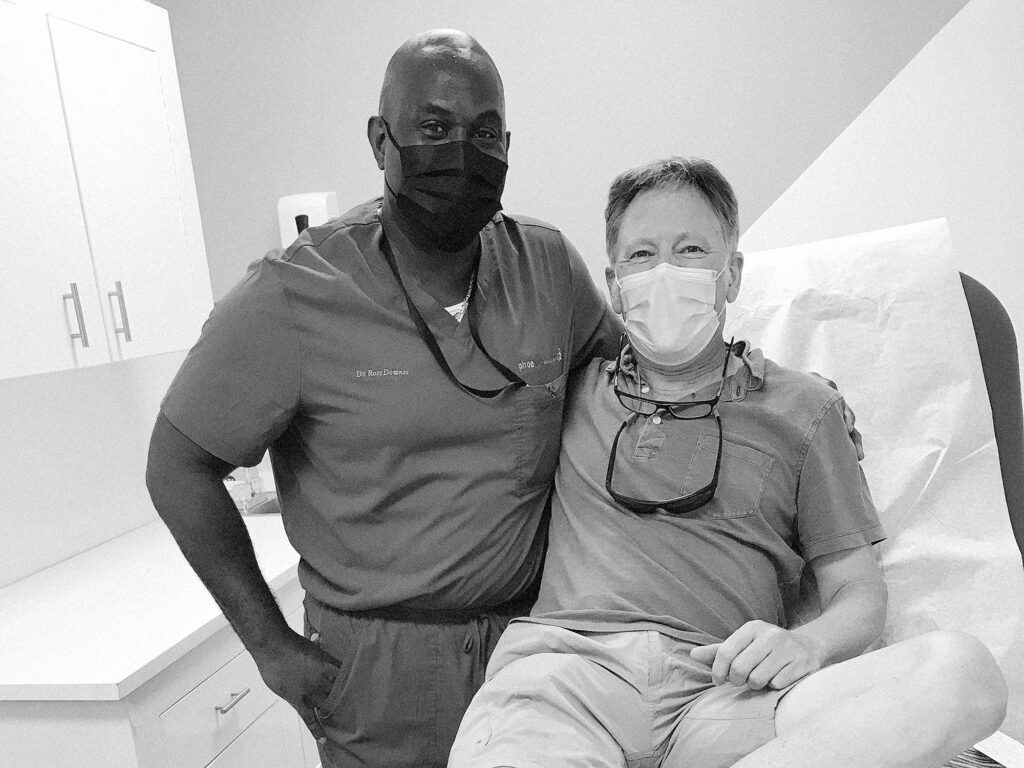
Ah, but what a groove. Through the Florida Straits and across the Great Bahama Bank and on past Nassau, we kept up the same driving pace that had propelled us down the US East Coast. Our arrival at Hawksbill Cay in the northern Exuma chain marked the moment when we truly took our foot off the pedal and inaugurated a new, slower rhythm that grew sweeter by the day.
The cruising tempo of the Bahamas in springtime is set by an ever-revolving cycle between two distinct weather patterns. Situated at the boundary between the temperate zone and the tropical trade-wind belt, the Exumas from December to April receive regular cold fronts—“northers”—that typically blow for three to four days, with gusts to 35 knots from the north and east. When they abate, the warmer trades kick in from the east and south; usually, these southerly winds are gentler, but reinforced trades in the winter can sometimes blow hard too. When the breeze is up, sailors tend to congregate in the limited number of shelters for a given direction.
In late winter 2022, we hunkered down for our first blow near the Exumas Land and Sea Park headquarters at Warderick Wells. At $35 per night, we picked up one of the park’s well-maintained and amply sized moorings. During the park’s regular VHF radio check-in on the second day of the blow, Eileen Councill, who hosts the “Sailing Blown Away” YouTube channel, put out a request for updated weather information. We agreed to meet on the beach with a PredictWind forecast we’d downloaded that morning through our Iridium Go! satellite phone. And so began our Exumas social life.
The next day on the same beach, we met Rob James, skipper of the 125-foot passenger schooner Liberty Clipper of Boston. He brought news of people and boats we knew in common. We saw other boats whose crews we’d get to know later in different anchorages, including Dave and Shelley Luscombe of the Xquisite X5 Plus Shell Shocked. I was part of the team that dubbed that boat “Best Cruising Catamaran (Over 50 Feet)” in Cruising World’s 2022 Boat of the Year contest, and it was a treat to see how the Luscombes of Alberta, Canada, relatively new to cruising, were learning the ropes.
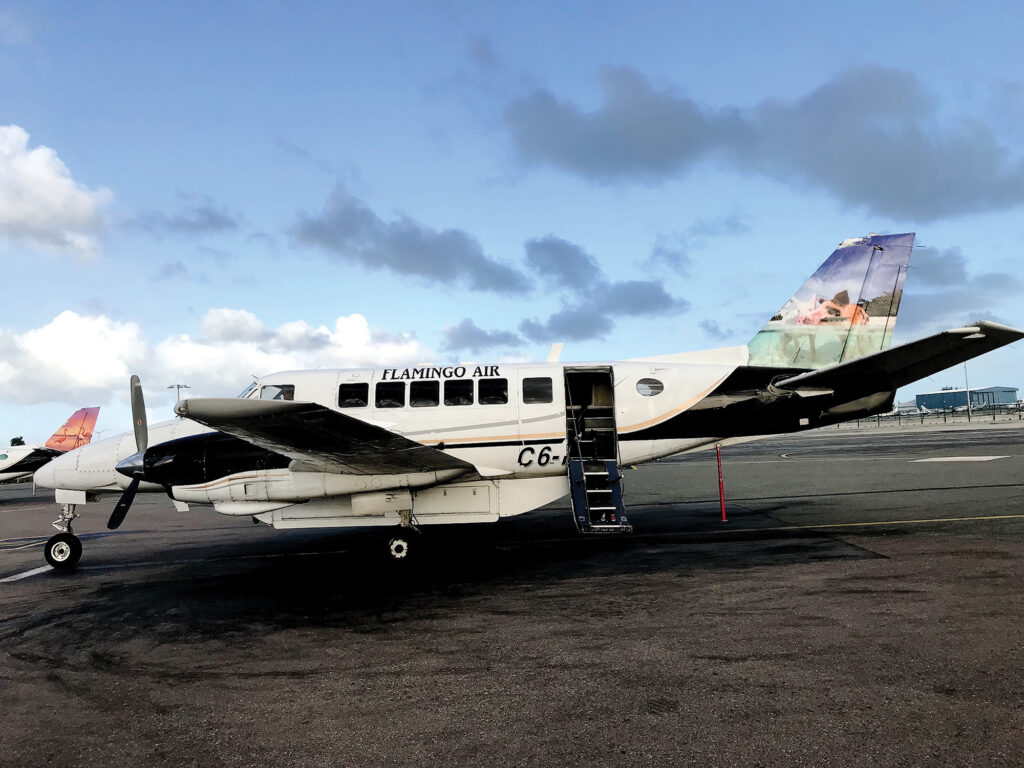
We loved the Bahamian communities at Staniel Cay, Black Point Settlement and Little Farmers Cay. Roosevelt Nixon, the patriarch of Farmer’s Cay Yacht Club, and his son, Julian, took us in like family from the moment we landed. We spent a quiet evening there with the restaurant’s chef, Edrique, who told us of the many pleasures of life on Andros Island, where his cousins live. His description of a local dish called “crab and dough” made our mouths water and put Andros in bold on the map we carry in our minds.
We strung together day after day like this, culminating in what Lesley described as a perfect day—sailing off the anchor at Big Majors Spot, swimming after lobsters, admiring the amazing world full of color and surprises underwater, and still more sailing to a new anchorage at Little Bay off Great Guana Cay near Black Point Settlement. We showered off the salt and dinghied in to the beach to walk into town for happy hour. The walk turned out to be not insubstantial, and we traversed quite a bit of the island to get to the bar. There we reencountered the owners of two boats we’d met earlier that week on the beach at Big Majors Spot. We also met the crew of Inca Cross, the female half of which, Katy Vohs, had been a dialysis nurse. We talked for a while about nursing and sailing, and other odds and ends.
Lesley wrote in her blog: “After a few rum punches, Tim and I began the long walk home and were both pleased and astonished when a Bahamian woman pulling out of her driveway saw us and ushered us into her car—she couldn’t believe we were going to walk all that way, and she drove us to our dinghy just out of kindness.”
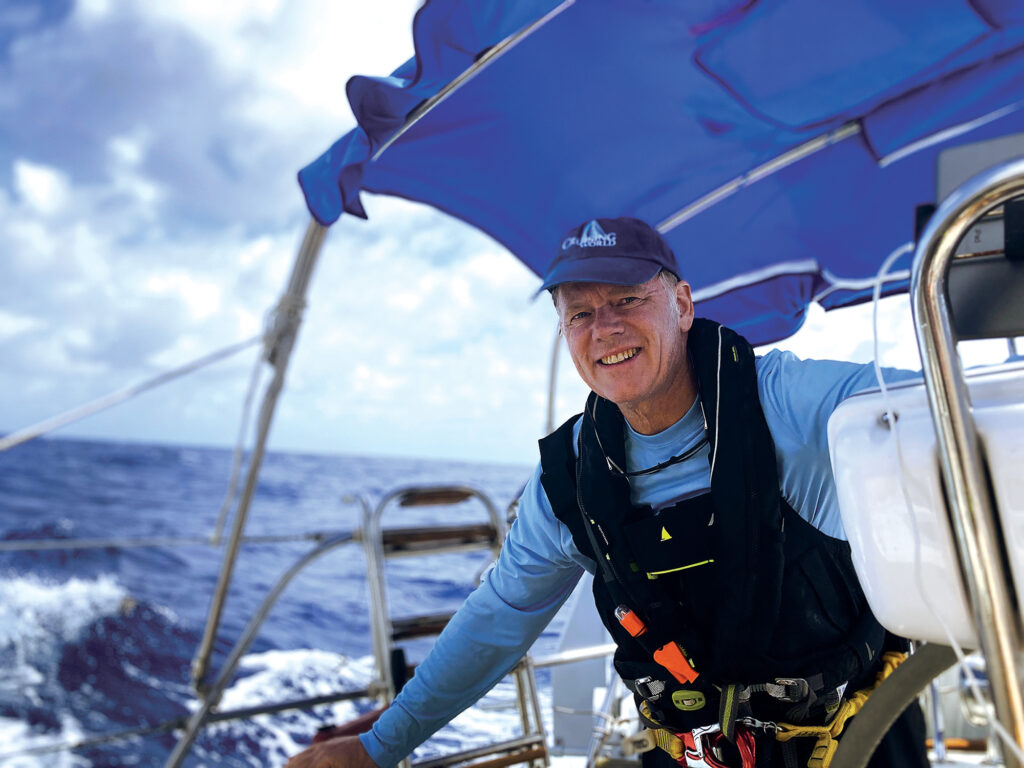
This was the state of our affairs when I awoke on Friday morning, March 4, in a cold sweat.
Several days earlier, we’d chosen Little Bay for the next approaching gale, this one set to start blowing in Friday’s wee hours. All week long, the cruising community had been chattering about where each boat would tuck in. On Great Guana Cay’s west side, Little Bay is just around a promontory from the main Black Point anchorage. Having anchored at Black Point before, we knew that an uncomfortable swell from deep Exuma Sound sometimes works into the main anchorage through Dotham Cut. Anchoring at Little Bay meant a longer trip into the settlement, by dinghy or by foot, but we’d be happier here while the wind blew hard, and we figured we had everything we needed to stay aboard till the weather moderated.
Sure enough, the wind was howling in the rigging Friday morning and blowing the tops off the waves coming from the beach just to windward.
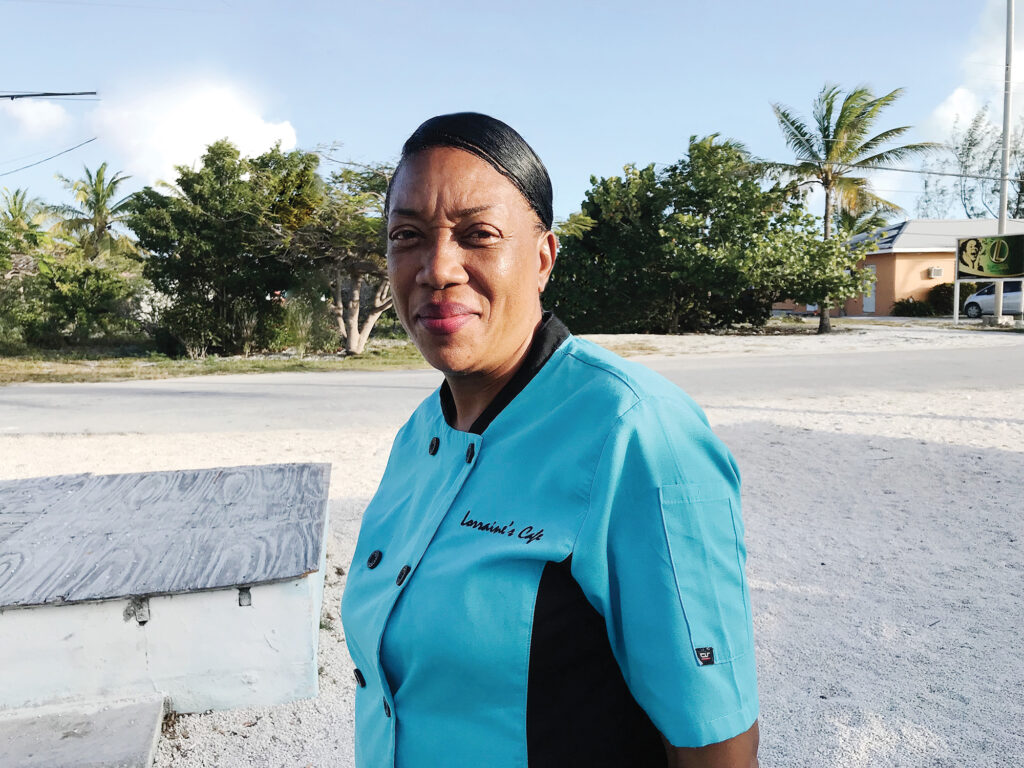
And that cold sweat? At first, I attributed it to Scorpio’s happy hour the previous night. As the sun rose higher that morning, and despite the drama outside, I felt very sleepy. I got up, checked the anchor rode, and promptly collapsed in a heap on the saloon settee. Lesley plied me with water, Gatorade and Advil.
When the hallucinations came, they were funny at first. Lesley painted them while I narrated: a large object, pink; now animate, like a giant herbivorous mammal; now still, like a plush piece of marshmallow furniture. I had a wonderful, long, detailed conversation with my Aunt Rose. I stared down a Cyclops. Looked him right in the eye.
By Saturday morning, Lesley was having less fun than I was. In the night, a rash had developed on the top of my right leg. It felt hot to the touch. We knew that Black Point had a medical clinic but also that it was closed on weekends.
“Will you call Katy from Inca Cross?” Lesley asked. I made VHF radio contact, then swapped cell numbers for a private conversation. Katy asked whether we had antibiotics aboard, which we didn’t—arguably my biggest mistake in all of our trip-planning. For well over a year after my October 2019 cancer surgery, I had felt fully healthy. But in February 2021, I contracted a fever, on the third day of which my right leg started to swell dramatically. The urgent-care doctor at the time diagnosed it as cellulitis and prescribed ciprofloxacin, which quickly solved the problem. Later that spring, I noticed that my right calf didn’t fit comfortably into my pants. My oncologist ordered scans to rule out blood clots, then suggested that maybe I was experiencing lymphedema—a swelling that some, but not all, patients experience when lymph nodes are surgically removed.
When the hallucinations came, they were funny at first. Lesley painted them while I narrated: a large object, pink; now animate, like a giant herbivorous mammal. I stared down a Cyclops. Looked him right in the eye. By Saturday morning, Lesley was having less fun than I was.
“If you weren’t leaving on this trip,” he said, “I’d suggest physical therapy to bring the swelling down.” He didn’t seem especially concerned.
Around the same time, my long-standing primary-care doctor moved to another state. I met my new doctor in early 2022 during a three-week trip home over the holidays after Lesley and I had already sailed from New England to Florida. I told her about the cellulitis and where we’d be sailing the boat, and asked for ciprofloxacin to carry aboard. She said she’d prefer not to prescribe antibiotics without knowing exactly what they were for. I followed her advice.
“No,” I told Katy from Inca Cross. “No antibiotics aboard.”
She suggested that I try Benadryl in case I was experiencing an allergic reaction. “If you try it for a day and nothing improves, you’ve ruled out allergies.”
In one of the cycles between Advil doses that day, my temperature spiked to 104. By Sunday morning, the rash had spread from the top of my leg to my ankle. We checked back in with Katy, now more urgently. She said it was time to put out a general call to the anchorage asking for antibiotics. Meanwhile, it was still blowing a moderate gale.
We weren’t sure how we’d get around to the well-populated Black Point anchorage even if somebody over there had the meds; with us in Little Bay, there were just a half-dozen boats.
“Billy Pilgrim, this is Whisper,” came one reply to our call. “We have Keflex aboard.”
Quick consultation with Katy. Yes, Keflex could help.
“Whisper, this is Billy Pilgrim. Where are you located?”
Sweet mother of Neptune, Whisper was the next boat to windward. And while Lesley wasn’t nearly as habituated to running the dinghy as I was by that point, she wasn’t taking any of my smack about how I’d just pop over there and be back real quick. She suited up in her life vest and foulies, and set off into the spume.
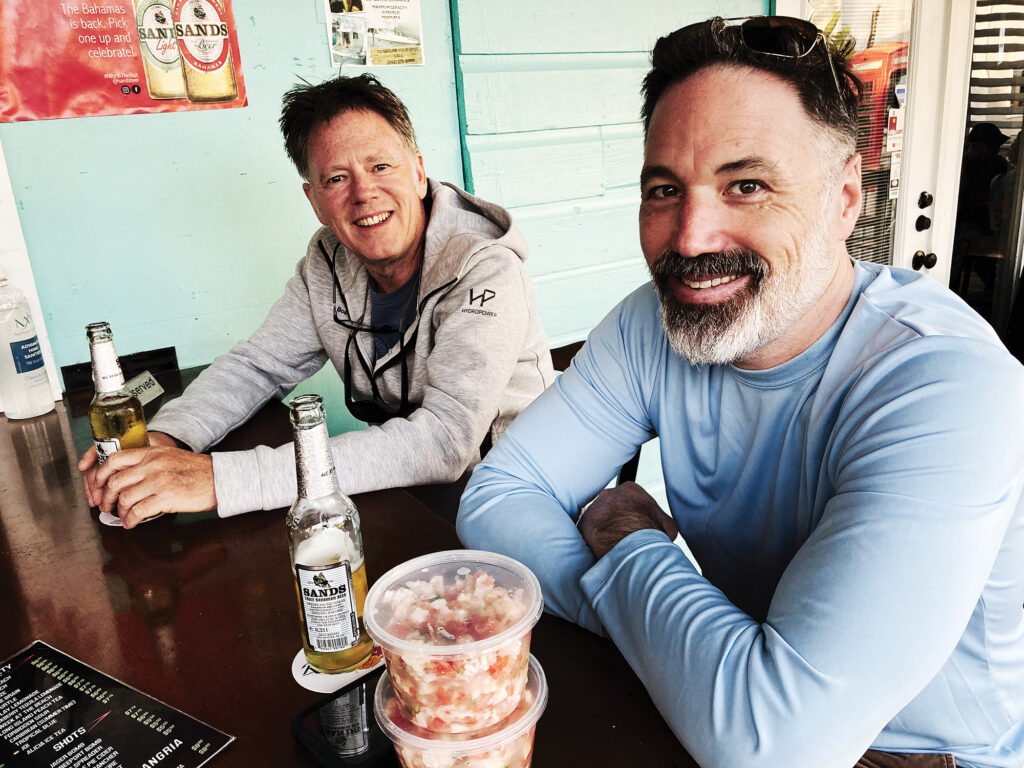
If Keflex might have helped me on Friday, by Sunday it was too late. When I woke Monday, my right leg wouldn’t support me. It was monstrously swollen. Also, I was out of my mind.
We knew we had to get to the clinic. The wind by now had moderated from a gale to merely a very strong breeze. We carefully rehearsed our roles, knowing there was no room for a mistake, fired up the diesel, and then hauled up the anchor and motored round to Black Point. Anchor down, life vests on. Lesley dinghied us to Lorraine’s Cafe, tied up, and then helped me up the dock’s high ladder. She propped me against a piling in the shade behind the cafe and ran ahead for the nurse.
The next person I saw—who knows how much later—was Lorraine herself. She was raising me up from my perch and supporting me the several steps to her car.
As I later learned, Lesley arrived at the clinic to find a locked door. By her own description, she was hyperventilating when she reached the cafe, where Lorraine was taking lunch orders from a large table. One look at Lesley, and Lorraine passed her table off to another server, then straightaway started taking care of our business.
Let it be sung from the rooftops: Once we were in Lorraine’s care, we were never again out of it. Lorraine got a woman they call Nurse Patton on the phone, and we landed back at the clinic just as she did. Nurse Patton looked at my leg, took my temperature and performed one or two other checks.
“How soon can you have a bag packed?” she asked.
“An hour,” Lesley said.
“Then you’re going to miss the next flight out,” she said. “But you need to be on the 4:30 flight to Nassau. He needs IV antibiotics, and I cannot provide that here.”
Nurse Patton called Esther Rolle at the airstrip to reserve two seats on the day’s last Flamingo Air flight off the island. Lorraine and Lesley hefted my carcass back across the street to the cafe, and then Lesley dashed back to the dinghy, and out to the boat to grab whatever we might need and give Billy what Billy might need to stay anchored there without us for a few days.
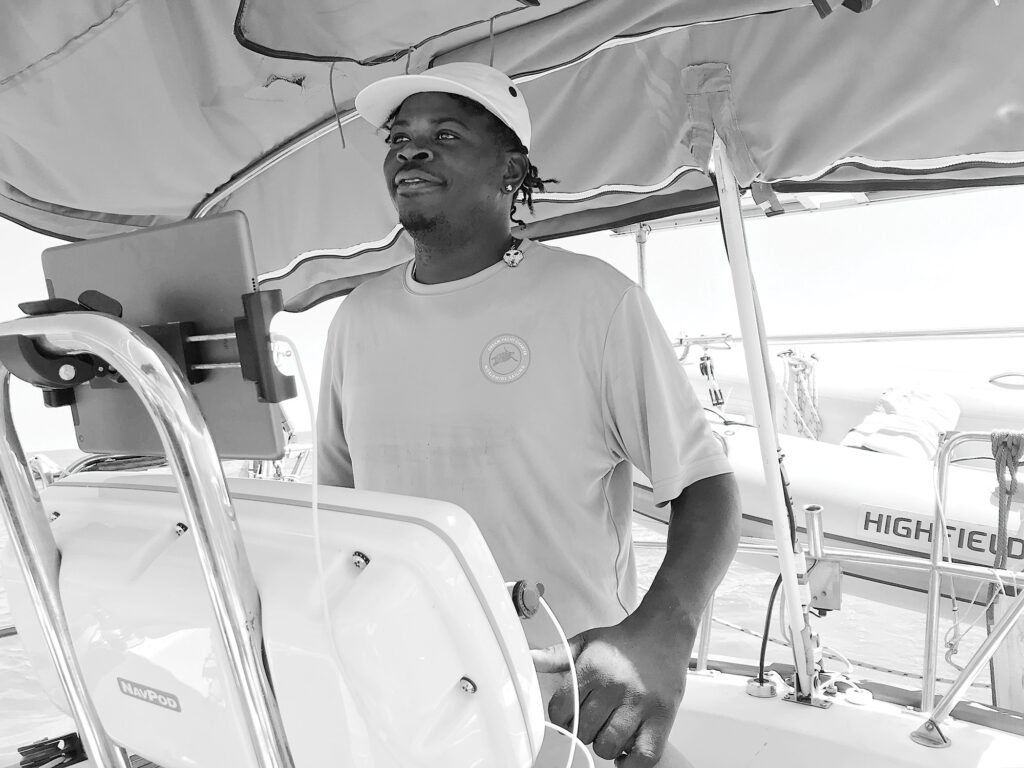
Back ashore, she hopped into Lorraine’s car with me, and we shot off in a dusty cloud to the airstrip’s one-room reception area. Ms. Rolle knew us before we arrived. She asked whether she should order me a wheelchair in Nassau.
“No,” I said. “I’ll be all right.”
The one other passenger in the reception area took a good look at me. “You want the wheelchair,” he said. Lesley breathed a relieved sigh when I relented.
“When you get to Nassau,” Ms. Rolle said, “look for Mr. Gibson. He’ll be waiting for you at the airport to drive you to the hospital.
Sure enough, there at the Lynden Pindling International Airport curb was Mr. Gibson.
The events so far had included their share of high-adrenaline what-next moments, but none had shocked me. None, that is, till we entered Doctors Hospital. Mr. Gibson helped me into the waiting area, where I could see a reception desk and a door marked “Emergency.” A receptionist led me to a bench, where I would await instructions.
Presently along came a polite young man asking after my health insurance. I showed him my Blue Cross card.
“I’m sorry,” he said. “We can’t accept that insurance here. In order to enter the emergency room, we’ll need a prepayment from you of $3,000.”
Gulp. What choice did I have? Out came the credit card. And with that, the emergency-room door opened.
My memory goes fuzzy here, but these are some words and phrases from that night that stuck in my consciousness: “sepsis,” “kidney function,” “necrosis,” “your blood is thick,” “dialysis,” “save the limb.”
The attending physician recommended that I be admitted, which made perfect sense to me—at least till the polite young man I’d met earlier reappeared.
“We’ll need a prepayment of $12,000 to admit you,” he said. Alarm bells exploded in my brain. My credit limit might not even go that high. Heck, for $500, I could fly home to Boston and be at Mass General this time tomorrow.
“Absolutely not,” I said. “We’ll do something else.” I raised myself to leave.
Visitors are not allowed in the Doctors Hospital emergency room. But somehow, thankfully, Lesley had made her way back to my station to hear all this. She had a few private words with the doctor and the accounts-receivable fellow.
“You’re staying here,” she told me. And then I passed out.
I awoke the next morning in a cheerful private room with a bandaged right leg and an IV drip in my arm. The staff who came and went were top-notch and lovely. The food was delicious. When Lesley came in, she was dressed head-to-toe in sterile gear—suited up for hazmat like when we dismantled Billy Pilgrim’s head and holding tank back at Maine Yacht Center. All seemed right with the world now. I figured they’d keep me overnight, get me stabilized, and then we’d head back to Black Point and Billy P the next day.
But I figured wrong, as I learned when I met my attending physician, Dr. Ross Downes.
“We’ll need to keep you here for at least a week,” he said.
For the first time in months, Lesley’s story and mine diverged here. On my second day in the hospital, we independently came to the same conclusion: Billy Pilgrim, alone, at anchor in Black Point, was on borrowed time. Peter and Theresa Clark on Dream Ketcher had gone aboard to run the engine and charge the batteries, and other fellow cruisers were looking out for us too. Lorraine’s husband was looking after our dinghy. But it was only by luck, really, that the Exumas was now two days into a short cycle of gentle weather.
To read Lesley’s firsthand story about how she and my sister, Monica Jennings, and her husband, Charlie, brought Billy P from Black Point back to Nassau, see the three-part “Challenges” entry on our blog (svbillypilgrim.com/blog).
For my part, a slow-drip of IV antibiotics knocked out the infection, and layers of foam and gauze wrappings of different densities bound my leg when I was finally released eight days later. I still couldn’t walk very far or well, so we booked a hotel on Junkanoo Beach for three nights of recuperation before returning to the boat. My cousin, Dan Robb, had planned to join us in the Far Out Islands. Instead, we redirected him to Nassau. I set him up in Billy P’s cockpit, taught him how to steer, plot a course and avoid collisions, and then collapsed with an elevated leg while we dodged cold fronts back toward Florida. Our pressing goal was to put up the boat for several weeks while I flew home to see my docs and start physical therapy.
For our trip back across the Gulf Stream, we faced one last high-stakes choice: cross in a 25-knot southerly, gusting to 35, or wait more than eight days till another, better weather window opened.
I had a five-day supply of oral antibiotics, so we played the best card we were dealt. We crossed.
It was a fast trip, with speed-over-ground past 11 knots at times. We made the entire crossing, West End on Grand Bahama to Fort Pierce, Florida, into the inlet and even to my sister’s backyard in Vero Beach, all in daylight. But, hoo boy, it was boisterous. As one of several peaky Gulf Stream combers found its way past Billy P’s cockpit coamings, the voice of Dr. Ross Downes reverberated.
“Whatever you do,” he said, “don’t get that leg wet.”
Four Takeaways
My infection, bad as it was, was on the verge of becoming much worse—on a time horizon not of days, but of hours. Here are four lessons I’ll apply before my next long cruise.
Travel Health Insurance
Before leaving for the Bahamas, I made sure my health-insurance policy from Blue Cross Blue Shield of Massachusetts was up to date. My policy is a PPO plan (Preferred Provider Organization), which allows me to get out-of-network care and see specialists without referrals. But Doctors Hospital refused to work directly with BCBS and required that I prepay for my stay—which, after eight days, came to more than $25,000. While BCBS tells me they’re treating my case as “in network,” at press time, six months after my hospitalization, I’m still waiting for the last $7,000 of the reimbursements. For a list of international health plans that Doctors Hospital accepts, see the International Patients tab on the hospital website. For other countries, find out which hospital you’d choose to be taken to, and then which insurance policies would cover you there.
Medical Evacuation Insurance
In Cat Cay, we met Dr. Kevin Hutton, the chief physician at the island’s all-volunteer medical clinic. He has a deep specialty in medical evacuations. Kevin and Sandy Hutton, sailors themselves (see “Finding Balance,” CW, June/July), use AirMed International. Before my next long trip, I would follow their lead. If you do, make sure you choose a policy that fits your cruising circumstances.
Onboard Antibiotics
My longtime primary-care physician had left her practice shortly before Lesley and I set off from New England, and I met my new doc just once before we set off on our southbound cruise. I told her that I’d contracted cellulitis the previous year and which antibiotic had cleared it up. I asked whether she thought I should carry some on the boat, and she said she’d rather not prescribe an antibiotic until she knew exactly what it was for. That’s a lead that, in retrospect, I regret following. Since my incident of cellulitis in the Bahamas, several physicians steeped in travel medicine have offered to set up Billy Pilgrim with a full pharmacy—an offer I aim to accept.
Let No Scratch Go Untended
I honestly don’t know what caused the infection that set off the cellulitis in my leg. At Little Farmers Cay, I had slipped on a partially submerged coral pier and barely scraped my knee. That was 10 days before the onset of the fever, and it showed no sign of becoming an infection site. Three days before the fever, there were sand fleas on the beach at Big Majors Spot, where we had cocktails. On the day before the fever, I snorkeled, but I never came in contact with coral. Still, I’ll be hypervigilant about any openings in my skin, particularly if it’s in my right leg.
Tim Murphy, a CW editor-at-large and a longtime Boat of the Year judge, has fully recovered after a season of physical therapy. He is the author of Adventurous Use of the Sea: Formidable Stories of a Century of Sailing from the Cruising Club of America (Seapoint Books, fall 2022). To read Lesley Davison’s account of Billy Pilgrim’s 2021-22 southbound season, visit svbillypilgrim.com/blog.






